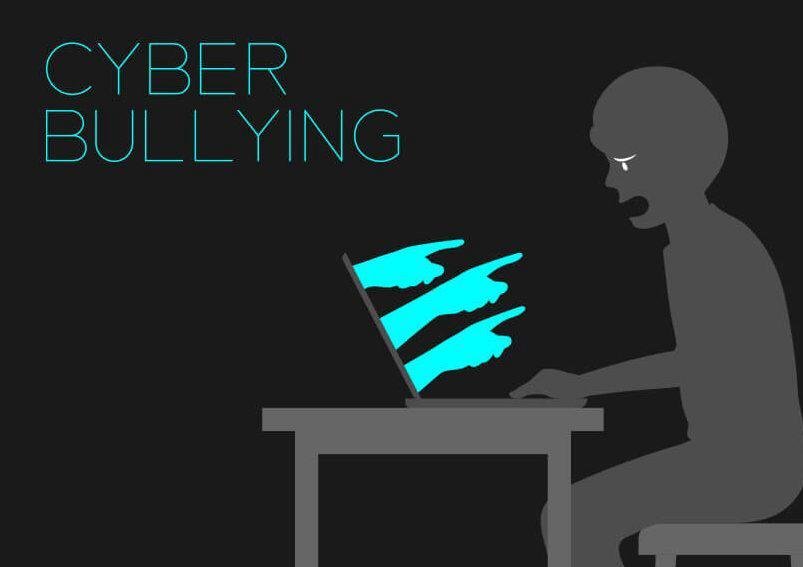Understanding Cyberbullying
Cyberbullying is a modern issue involving harmful online behaviors. It can take various forms, including harassment, threats, defamatory posts, and cruel messages.
Types of Cyberbullying:
- Harassment: Repeated, aggressive messages intended to frighten or distress
- Cyberstalking: Persistent online surveillance
- Doxing: Releasing private information like addresses or phone numbers online
- Deepfakes: Using AI to create deceptive videos or images
Cyberbullying affects various age groups, with teenagers facing high exposure due to extensive social media use. About 16% of high school students report being cyberbullied1. Adults can also experience cyberbullying in workplaces.
The impacts of cyberbullying include:
- Decreased self-esteem
- Anxiety
- Depression
- Declining school performance
In severe cases, it can lead to suicidal thoughts or actions.
Understanding these behaviors helps society address and reduce this online threat.

AI Technologies in Cyberbullying Detection
AI technologies play a crucial role in detecting cyberbullying. Key components include:
- Machine learning algorithms: Analyze datasets to recognize bullying patterns, including message frequency, sentiment, and negative interactions.
- Natural language processing (NLP): Interprets human language, detecting offensive content and subtle forms of harassment by analyzing context, syntax, and semantics.
- Deep learning: Handles unstructured data like images and videos, useful for identifying deepfakes and manipulated content.
These technologies often work together to form comprehensive detection systems. They require continuous updates to keep pace with evolving cyber harassment tactics.
“AI-based detection enables swift intervention, helping protect individuals from the effects of online harassment.”

AI in Preventing Cyberbullying Spread
AI algorithms analyze interaction data to identify bullies, victims, and bystanders. This helps flag potential bullying instances before they escalate and highlight users who may need support.
AI and human moderators work together to manage toxic language and hate speech. AI provides initial detection and filtering, while human moderators add context-based judgment. This approach addresses harmful content promptly while minimizing false positives.
Automated systems operate continuously, ensuring consistent moderation and rapid response to potentially damaging interactions. They can trigger automated responses like warning messages or temporary account suspensions.
The combination of AI and human moderation creates a preventive framework that discourages future occurrences of cyberbullying, safeguarding digital communities.

Personalized AI Interventions for Victims
AI offers personalized interventions for cyberbullying victims by:
- Analyzing interaction patterns to identify root causes of bullying
- Creating tailored action plans, such as adjusting privacy settings or notifying trusted adults
- Detecting signs of anxiety or depression through changes in online behavior
- Suggesting mental health resources and connecting victims with support services
- Using predictive analytics to foresee potential distress episodes
- Providing educational content for families to recognize signs of cyberbullying
- Adapting interventions based on the victim’s evolving needs
This approach ensures victims receive timely, context-sensitive support that addresses their unique circumstances and psychological needs.

Challenges and Risks of AI in Cyberbullying
Despite its benefits, AI in cyberbullying prevention faces several challenges:
| Challenge | Description |
|---|---|
| Potential misuse | AI can be used to create harmful content like deepfakes or sophisticated harassment campaigns. |
| Privacy concerns | Data aggregation tools may be exploited to gather personal information without consent. |
| Accuracy limitations | AI may struggle with context, sarcasm, or cultural nuances, leading to false positives or negatives. |
| Balancing free speech and moderation | Overly aggressive AI moderation can lead to censorship, while lenient algorithms may fail to catch harmful behavior. |
| Transparency and accountability | The decision-making processes of AI systems must be clear to users to maintain trust. |
Addressing these challenges requires ongoing technological advancements, collaboration among stakeholders, and evolving policy frameworks. Human oversight remains crucial for handling complex cases that require nuanced understanding.

Future Directions and Innovations
AI in combating cyberbullying continues to evolve, with promising advancements on the horizon. Emerging technologies like reinforcement learning and federated learning are paving the way for more sophisticated AI models.
Reinforcement learning allows AI systems to improve through interactive feedback, making them more adaptive to evolving forms of cyberbullying. These algorithms can adjust their moderation strategies based on real-time data, reducing the gap between detection and intervention.
Federated learning enhances privacy by decentralizing the training process. This approach allows models to learn from diverse datasets without compromising individual privacy, creating robust AI solutions for cyberbullying detection.
Blockchain technology shows potential for improving transparency in AI moderation systems. By employing a distributed ledger, moderation decisions can be documented and verified, making the process more transparent and fostering trust.
Virtual reality (VR) and augmented reality (AR) are advancing the creation of digital literacy programs. These technologies can simulate scenarios where users can practice dealing with online harassment in a safe environment.
Emotional AI, capable of recognizing human emotions, is being explored for more nuanced responses to cyberbullying incidents. These models can detect emotional cues in text, voice, and images, potentially offering immediate support to victims.
Key Stakeholders in AI-Driven Cyberbullying Prevention:
- Tech companies
- Educators
- Policymakers
- Psychologists
- Civil society organizations
Digital literacy remains crucial. As AI tools become more prevalent, users need to understand how these technologies work and how to engage with them responsibly. Programs should focus on teaching critical thinking, safe online behaviors, and how to recognize and report cyberbullying.
“Regular feedback can drive continuous improvement and ensure AI solutions are effective in real-world scenarios.”
Tech companies should maintain open dialogue with their user communities to inform the development of AI tools. This collaborative approach can lead to more effective and user-friendly solutions.

By leveraging advanced AI technologies and understanding cyberbullying’s complexities, we can work towards creating safer online environments. The integration of AI in detecting and preventing cyberbullying offers potential for more respectful digital spaces. Recent studies have shown that AI-powered moderation tools can reduce instances of cyberbullying by up to 40% on social media platforms1.



